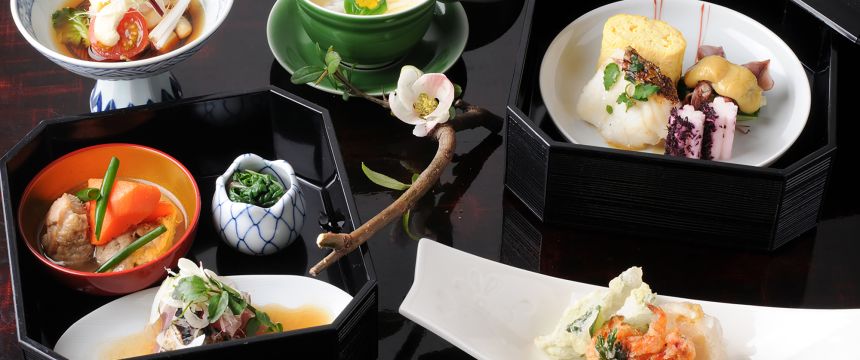Tokamachi, Niigata Prefecture – Hokuriku Shinetsu
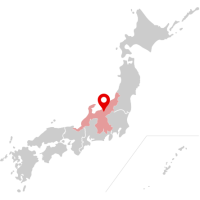
As soon as the snow thaws in Tokamachi, the preparation of the next winter’s food stores begins. And when the landscape is once more blanketed in snow, the kimono looms are pulled back out for the long winter months, when farming is impossible.
The area’s quintessential cuisine, hegi soba (buckwheat noodles), is born from that cycle of food and thread—the seaweed that weavers use as a starch when making textiles is even kneaded into the dough to make especially firm noodles. When rolled out, the soba is stacked in neat coils—said to represent the weave and beauty of a kimono—and placed on a special wooden tray known as a hegi.
Cuisine in Tune with the Seasons

This quiet city near Niigata, on the Japan Sea coast, is just two hours from Tokyo by train. Once there, you’ll feel that you’re in another world, far from the bustling capital. This is especially true in mid-winter, when a thick blanket of snow covers the landscape.
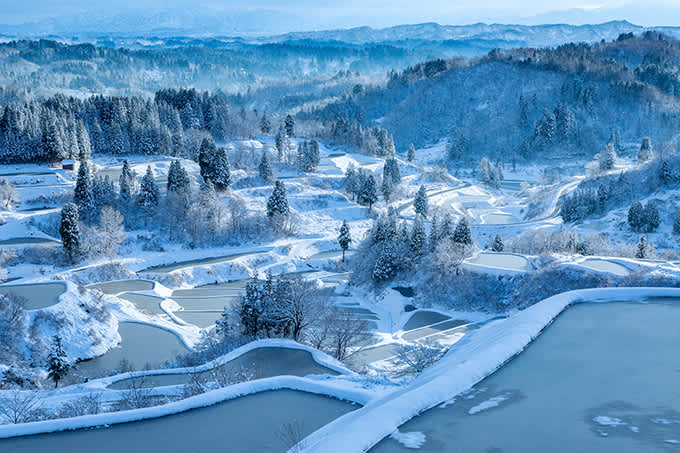
Sandwiched between sea and mountains, this region more than earns its name as Japan’s snow country. It receives some of the heaviest snowfall anywhere in the world, with accumulation of four to five meters each winter. Summer, in contrast, is hot and sunny. It is this seasonal diversity that has shaped both the local culture and the topography of the countryside.
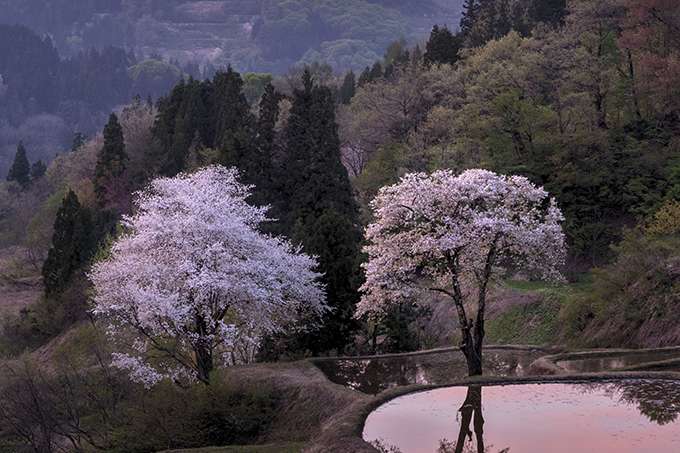
To grow good rice, farmers need a plentiful source of pure water—something the snowmelt from the uplands supplies year-round. Flat land is also essential, and the farmers have carved out the mountainsides over the centuries to mold the terrain into scenic rice terraces known as tanada. While these can be found throughout the Tokamachi area, the most beautiful are the Hoshitoge Rice Terraces, which have become a magnet for photographers thanks to the way in which their surfaces mirror the changing seasons.
The local rice cultivar, Koshihikari, originated in the neighboring Uonuma district but is now grown everywhere in Tokushima Prefecture. With its innate sweetness that develops as you chew, it forms the perfect foundation for any Japanese meal. In a nation that takes its rice extremely seriously, the Koshihikari grown in this area is considered among the very finest.
Honed by Adversity
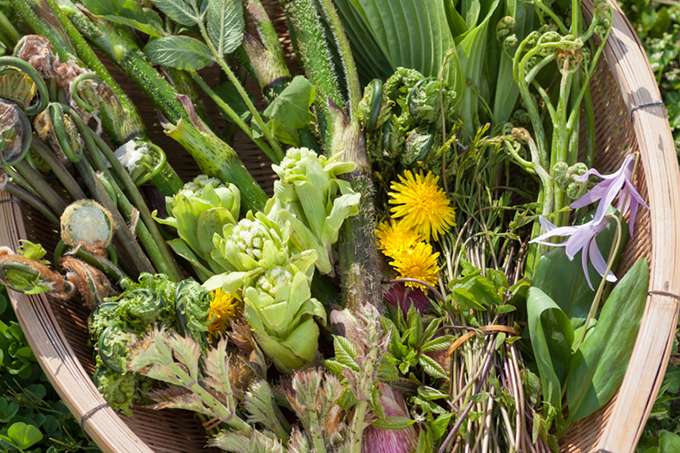
At the end of winter, even before the snow has fully vanished from the rice paddies, the first sansai (wild mountain vegetables) start to appear. Fuki (butterbur), kogomi (fiddlehead fern), and gyoja ninniku (alpine leek) are just three of the numerous species of sansai that form an essential part of the local diet, especially in spring.
In the old days, people had to survive through the long, dark months on whatever produce they could preserve. After months of eating salted dried fish, root vegetables, and pickles, the typically sharp, bitter flavors of these sansai offered much-needed nutrition and welcome reassurance that the growing season was just around the corner.
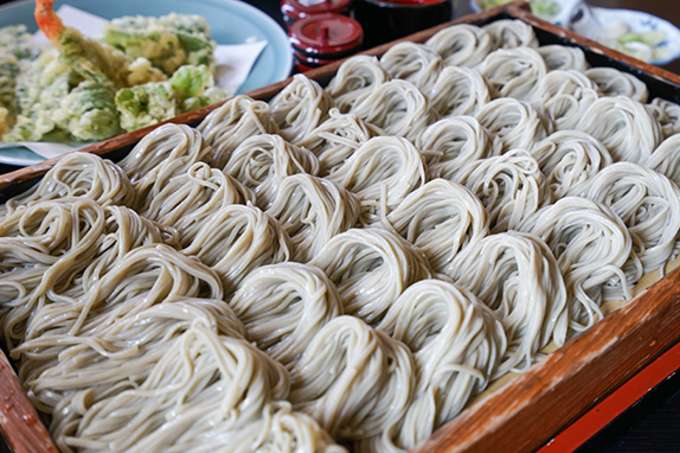
Tokamachi’s hegi soba are also a product of resourcefulness against adversity. Because buckwheat groats do not contain the gluten needed to hold the dough together when it is formed into noodles, some wheat is usually mixed in. But wheat is not grown in the Niigata countryside, so the local artisans came up with an ingenious alternative, a type of seaweed known as funori.
When softened in water, this edible seaweed turns into a thick, sticky paste. It has long been used by kimono makers to stiffen the fabric as it is woven, and is just as effective in binding soba, giving the noodles a slightly firm texture without affecting the flavor. It also allows them to be fashioned into delicate loops, which are arranged into bite-sized portions on the wooden hegi tray.
The noodles are usually eaten cold and enjoyed simply with a soy sauce-based dip. They go especially well with tempura of seafood or seasonal vegetables and, most especially, with sansai.
Niigata Prefecture is also famous for its fish and other seafood. However, in recent decades, Tokamachi has come to be known for its local Tsumari pork. It is appreciated for its mild flavor and can be aged for an extended period, giving it a tender texture and drawing out the delicious umami in the meat that melts in your mouth.
Year-Round Culture
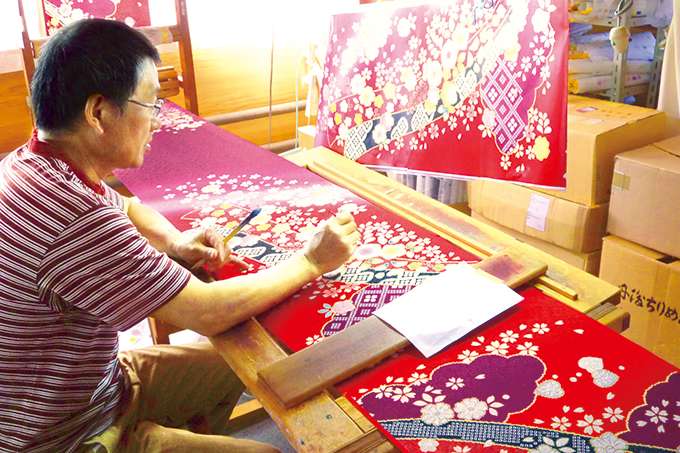
Events are held in Tokamachi throughout the year, ranging from the winter snow festival to summer fireworks displays and the annual kimono festival, which celebrates the city’s traditional weaving industry. The area also has a long tradition of producing pottery called kaengata doki, named for its appealing flame-shaped designs. Dating back some 5,000 years to the prehistoric Jomon Period (10,500–300 BCE), the finest pieces can be viewed in the Tokamachi City Museum.

In a more modern vein, the city is host to one of the largest festivals of contemporary art, the Echigo-Tsumari Art Triennale. Attracting major artists from around the world, the exhibits are held in a range of settings, from a former elementary school to the rice terraces in the surrounding countryside.
Contact Information
Naraya Ryokan and Kissako Café
396 Kusatsu, Kusatsu-machi, Agatsuma District, Gunma Prefecture 377-1711
How to Get There
From Tokyo, Tokamachi is easy to reach by train. Take the Joetsu Shinkansen to Echigo-Yuzawa Station (about 80 minutes) and transfer to a local train on the Hokuhoku Line to Takamachi (40 minutes). From Niigata Airport, it takes about two and a half hours by train.
Recommended Itineraries
The Hoshitoge Rice Terraces are a 20-minute drive from Matsudai Station and a 40-minute drive from Tokamachi Station. These times may be longer in winter due to snow. To see everything the area has to offer, you really need to visit twice—in both the green and snow seasons.
Related Links
Tokamachi Tourist Association (English)
Echigo Tsumari Biennale (English)
Tokamachi Snow Festival (English)
The Tokamachi City Museum (English)
Map
Featured Cuisine
Hegi soba noodles are firm but smooth, and so go down smoothly. They are separated by hand, placed on a distinctive wooden tray known as a hegi, and eaten in bite-sized servings. Connoisseurs will want to enjoy them the moment they arrive at the table, before they start to stick together. If you want a bit more variety, try them served with tempura of local vegetables.
All information is correct as of the time of writing.
Please check for the latest information before you travel.




















































